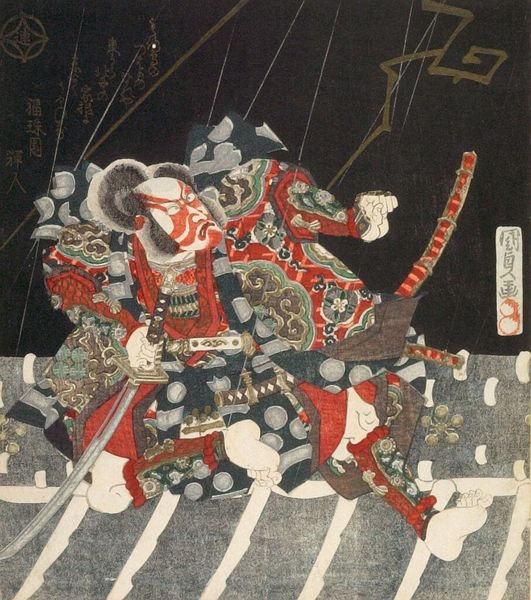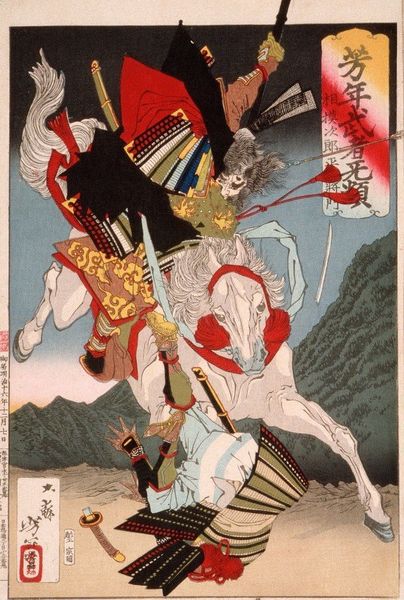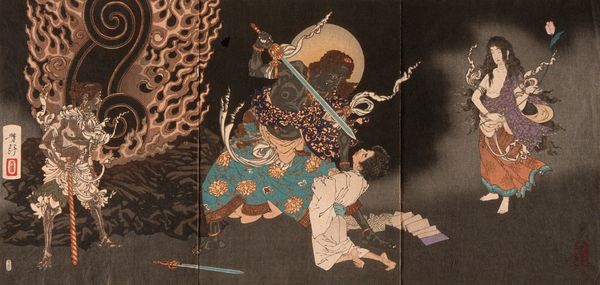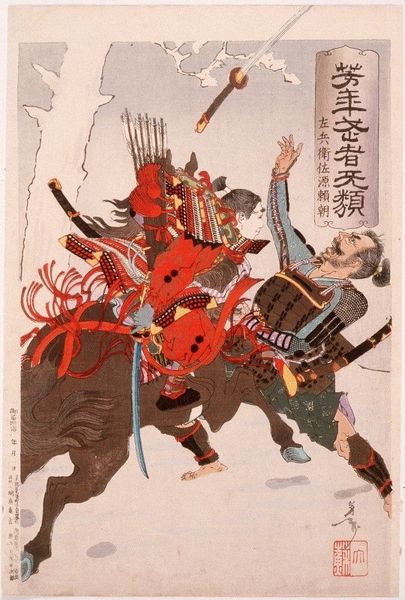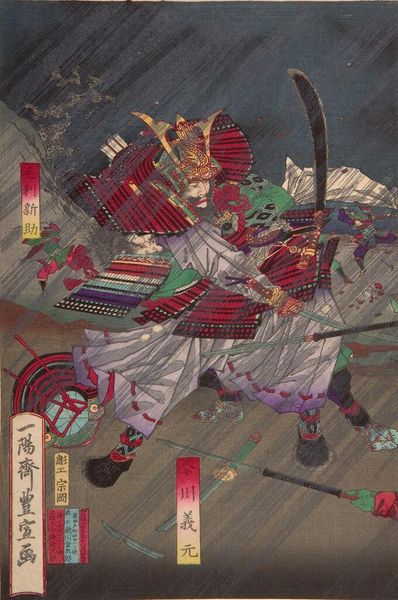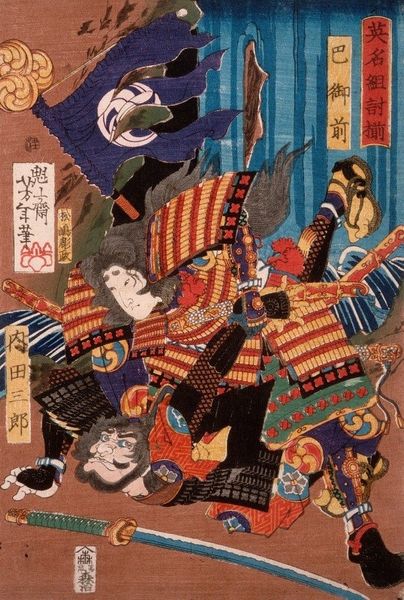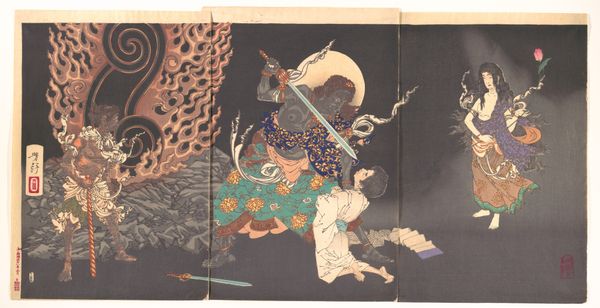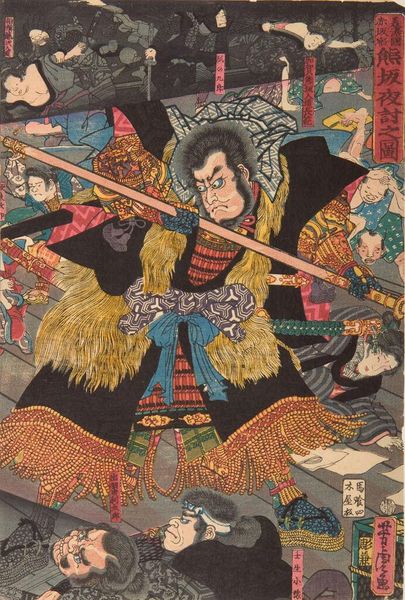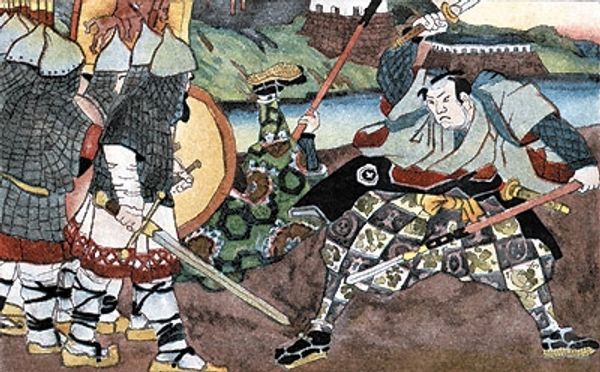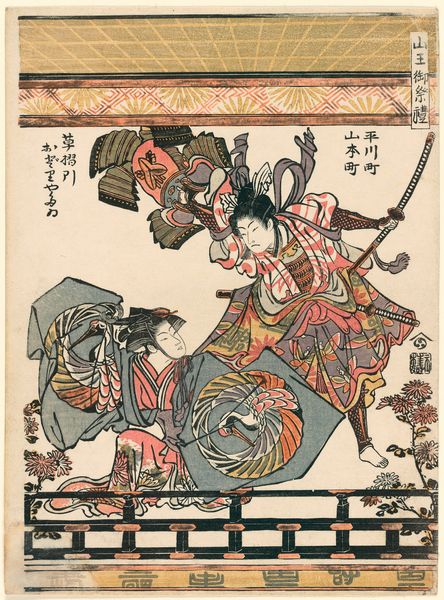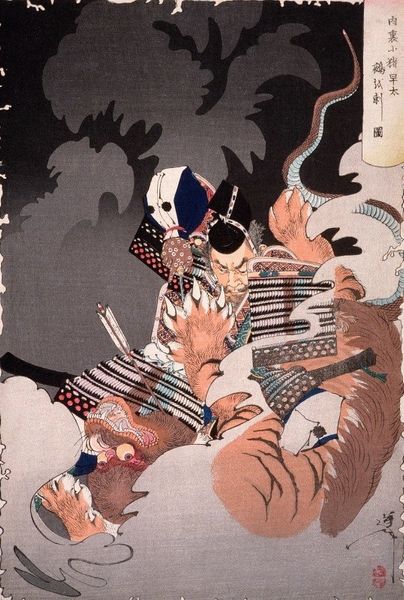
Copyright: Public domain US
Editor: Okay, so this is "The Lad in Battle" by Kay Nielsen, created in 1914. The artwork just pulsates with frantic energy – look at all those arrows! It’s quite intense. What strikes you when you look at this? Curator: Considering this was made in 1914, just before and as World War One erupted, one wonders about Nielsen's relationship to representing conflict and masculinity. We see a romanticized version of warfare here, all flowing lines and stylized violence, almost decorative. How does that relate to the lived experiences of soldiers at that time, or even our contemporary understanding of war? Editor: That's interesting...romanticized, sure, but it also seems to downplay the actual horrors of war. The lad looks almost heroic. Curator: Exactly. Consider the public's appetite for heroic imagery during wartime. It serves a particular function. Who do you think this image might be targeted toward? How might it affect the national sentiment toward the War? Editor: Probably aimed at inspiring people back home. Make them believe in the glory, not the grim reality. What about the Art Nouveau elements in the drawing style? Curator: Yes! Nielsen utilizes those aesthetics to further soften the narrative and add a fairytale gloss to war. How does Nielsen's unique stylistic perspective shape how we understand, and perhaps misunderstand, concepts of war? Is it pure fantasy, propaganda, or a blend? Editor: Definitely something to consider - this heroic lens and when exactly it was created provide another view. Thank you for making me think differently! Curator: Indeed, reflecting on the purpose of visual narratives is vital in understanding how art and historical events affect public imagination.
Comments
No comments
Be the first to comment and join the conversation on the ultimate creative platform.
